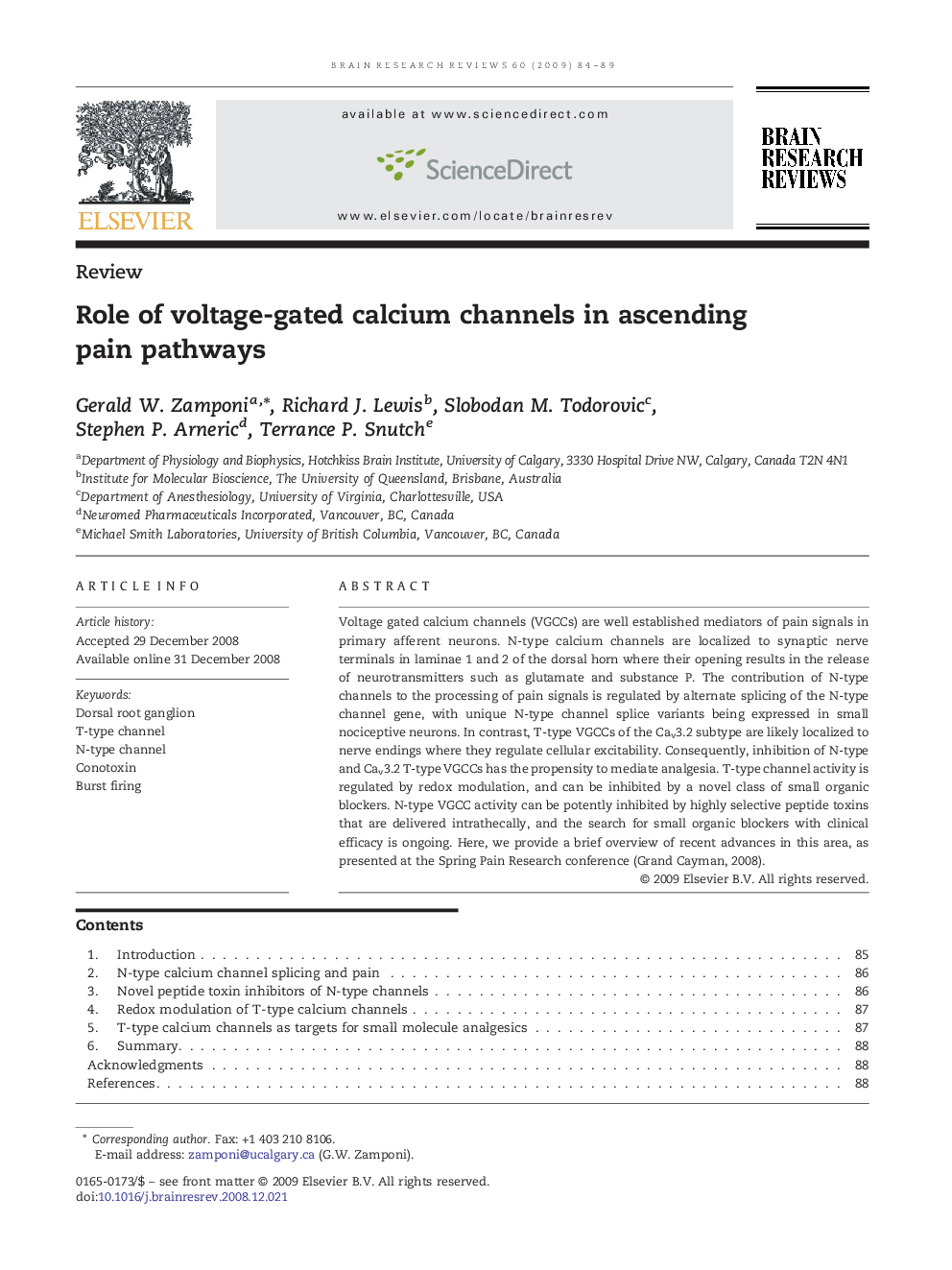| Article ID | Journal | Published Year | Pages | File Type |
|---|---|---|---|---|
| 4333808 | Brain Research Reviews | 2009 | 6 Pages |
Voltage gated calcium channels (VGCCs) are well established mediators of pain signals in primary afferent neurons. N-type calcium channels are localized to synaptic nerve terminals in laminae 1 and 2 of the dorsal horn where their opening results in the release of neurotransmitters such as glutamate and substance P. The contribution of N-type channels to the processing of pain signals is regulated by alternate splicing of the N-type channel gene, with unique N-type channel splice variants being expressed in small nociceptive neurons. In contrast, T-type VGCCs of the Cav3.2 subtype are likely localized to nerve endings where they regulate cellular excitability. Consequently, inhibition of N-type and Cav3.2 T-type VGCCs has the propensity to mediate analgesia. T-type channel activity is regulated by redox modulation, and can be inhibited by a novel class of small organic blockers. N-type VGCC activity can be potently inhibited by highly selective peptide toxins that are delivered intrathecally, and the search for small organic blockers with clinical efficacy is ongoing. Here, we provide a brief overview of recent advances in this area, as presented at the Spring Pain Research conference (Grand Cayman, 2008).
